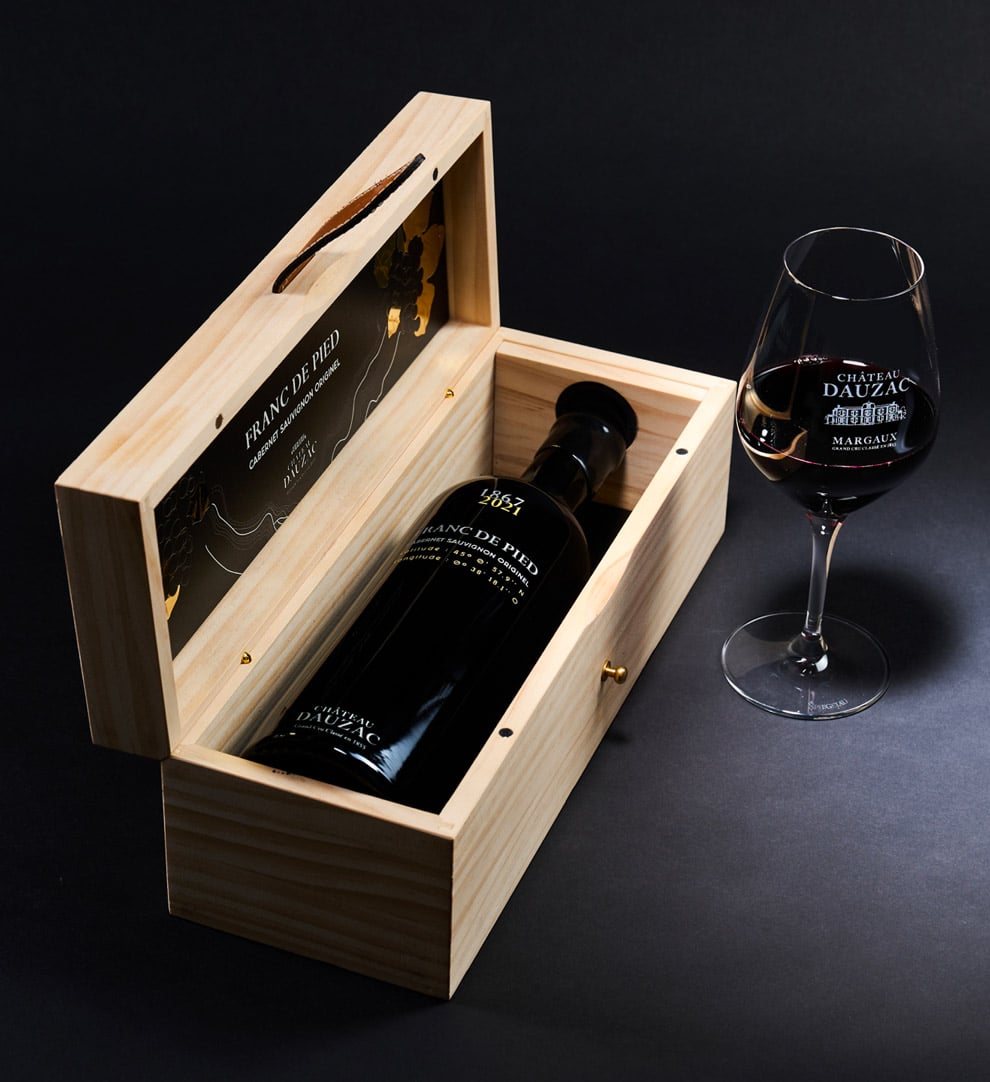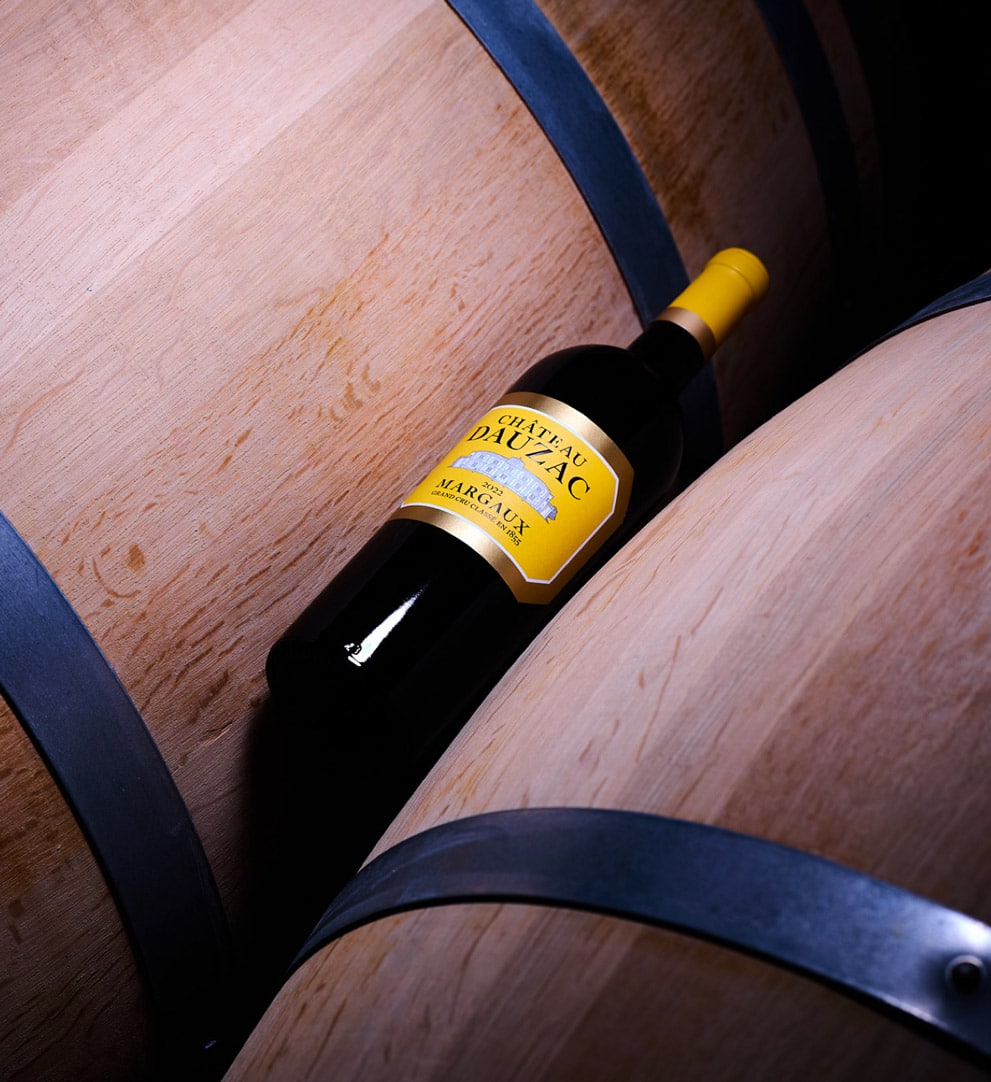
Franc de Pied
Rediscover the original flavour of the ‘king of grapes’ – Cabernet Sauvignon – which existed at the time of the 1855 classification of Médoc crus.
The wines

Rediscover the original flavour of the ‘king of grapes’ – Cabernet Sauvignon – which existed at the time of the 1855 classification of Médoc crus.

A wine that expresses deep gravel terroirs and dominated by Cabernet Sauvignon, Château Dauzac reveals a nicely complex bouquet which slowly unfolds during aeration.